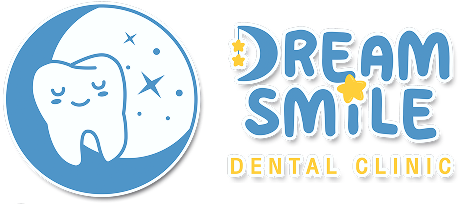What is a Dental Implant?
How Do Dental Implants Work?
Dental implants mimic natural tooth roots. Once placed, the surrounding bone gradually fuses with the implant, providing strong and stable support for chewing and overall oral function.
Who Needs a Dental Implant?
- Individuals who have lost natural teeth
If a tooth is missing due to extraction or trauma, immediate replacement is recommended to prevent shifting of adjacent teeth and bite misalignment, which can lead to complications and higher treatment costs later. - Denture wearers experiencing discomfort
If removable dentures cause instability due to low gum ridges, implants can help secure dentures in place, improving comfort and chewing efficiency.
Who Should Avoid Dental Implants?
Since dental implants involve a surgical procedure, certain conditions may limit eligibility:
- Active infection or inflammation in the implant area
- Poor oral hygiene (e.g., severe cavities, gingivitis, or periodontal disease)
- Insufficient bone density – A bone graft may be required before implantation.
- Smoking habits – Can interfere with healing and increase implant failure rates.
- Certain systemic conditions – Uncontrolled diabetes, severe osteoporosis, or blood disorders may pose risks.
- Medications affecting blood clotting – Patients taking anticoagulants (e.g., Aspirin, Warfarin) should consult their doctor before the procedure.
- Pregnancy – Especially in the first or third trimester, as dental X-rays and prolonged dental procedures may cause discomfort.
What Happens If You Don’t Get a Dental Implant?
- Teeth Shifting & Bite Misalignment – Gaps left by missing teeth cause adjacent teeth to tilt or shift.
- Bone Loss (Jawbone Resorption) – The bone that once supported the tooth root begins to deteriorate.
- Speech Issues – Missing teeth can affect pronunciation and clarity.
- Aesthetic & Confidence Impact – Missing visible teeth can affect self-esteem and appearance, leading to hesitation in speaking or smiling.
Parts of a Dental Implant
A dental implant consists of three key components:
- Fixture – A screw inserted into the jawbone, acting as the artificial tooth root.
- Abutment – A connector that links the fixture to the prosthetic tooth.
- Prosthetic – The visible replacement tooth (e.g., crown, bridge, or denture).
Types of Dental Implants
- Single Tooth Implant – For replacing an individual missing tooth with a 1:1 implant-to-crown ratio.
- Implant-Supported Bridge – Used when multiple adjacent teeth are missing, reducing the need for individual implants.
- Implant-Supported Denture – Ideal for patients missing all or most teeth, providing a secure fit for dentures.
Bone Grafting for Dental Implants
Bone volume and density play a crucial role in implant success. If insufficient bone is present due to aging, gum disease, or trauma, a bone graft (bone augmentation) may be required before implant placement.
Candidates for Bone Grafting:
- Elderly individuals with bone loss
- Long-term tooth loss without replacement
- Patients with severe gum disease or past oral infections
After 3-6 months, the grafted bone will integrate with the jawbone, preparing the site for implant placement.
ที่มาของกระดูกที่ใช้ในการปลูก
หลังจากปลูกระดูกแล้วคนไข้จะต้องรอประมาณ 3-6 เดือน เพื่อให้กระดูกเจริญเติบโต และพร้อมสำหรับการฝังรากฟันเทียม ใบบางกรณีสามารถปลูกกระดูกพร้อมกับกับฝังรากฟันเทียมได้เลย ขึ้นอยู่กับดุลยพินิจของคุณหมอ
Post-Implant Care Instructions
Oral Hygiene:
- Avoid brushing the implant site aggressively.
- Use an antibacterial mouthwash (e.g., Chlorhexidine) for the first week.
- Clean around the implant with interdental brushes and floss.
Dietary Recommendations:
- Avoid using a straw for 2-3 days (suction pressure may cause bleeding).
- Eat soft foods for 2 weeks to allow healing.
- Avoid hot, carbonated, or acidic foods/beverages.
Additional Precautions:
- Do not push on the implant with your tongue, as this may cause movement or failure.
- Some swelling is expected within the first 2-3 days; use an ice pack to reduce discomfort.
- No smoking for at least 1 week to aid healing.
- Avoid strenuous exercise for 1-2 days; normal activities can resume after 1-2 weeks.
Possible Dental Implant Complications
- Loose Implant – Failure of the bone to integrate with the implant, often due to poor bone density, smoking, or oral hygiene issues.
- Infection – Symptoms include pain, swelling, fever, or pus formation. Untreated infections can lead to implant failure.
- Excessive Bleeding – Minor bleeding for a few hours is normal, but continuous bleeding beyond 6 hours requires immediate dental attention.
- Nerve Damage – Implants placed near nerves may cause temporary or permanent numbness. A 3D CT scan is used at Dream Smile to prevent such issues.
- Sinus Perforation (for upper jaw implants) – In rare cases, an implant may penetrate the sinus cavity, increasing infection risks. 3D imaging technology helps minimize this risk.
